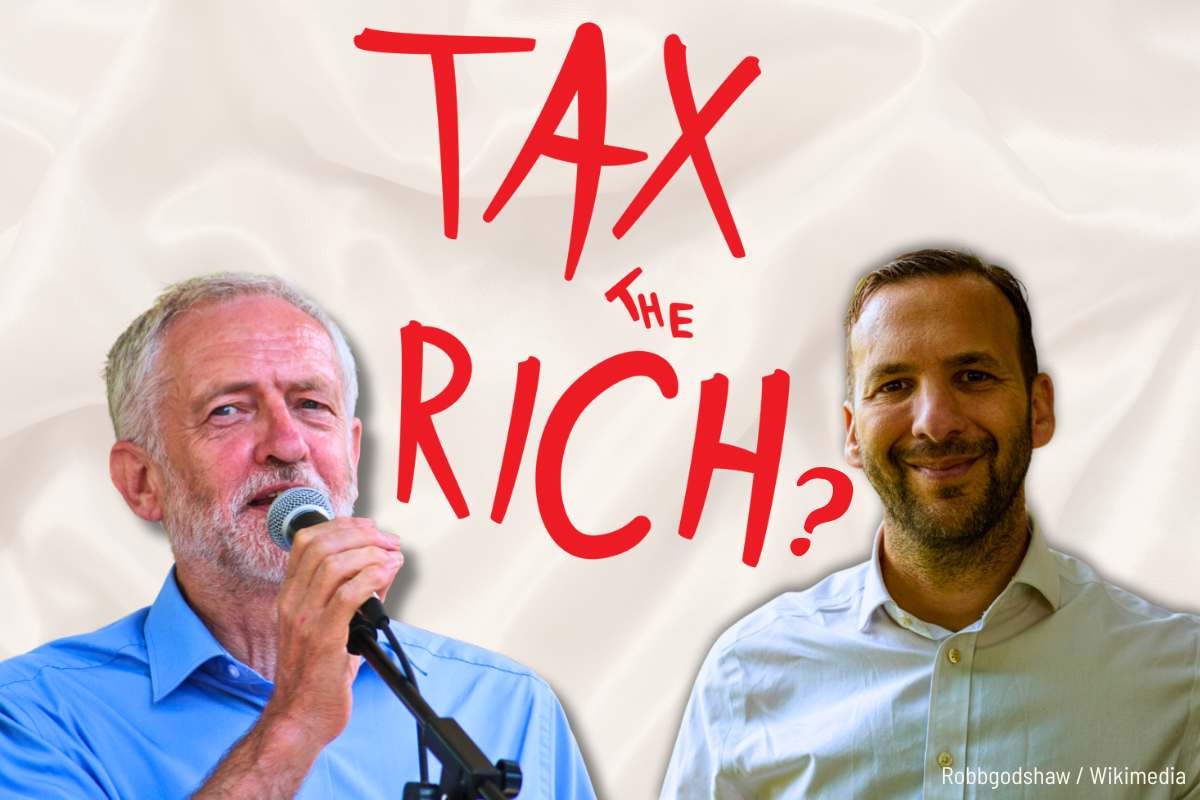
This is an important book. In a nutshell, what Andrew Kliman shows is
that Marx’s laws of motion of capitalism (how capitalism works and does not
work) are logically consistent and theoretically valid.
Kliman’s book is a compilation and summary of all the efforts of a few
Marxist economists over the last 30 years to defend Marxist economic theory
from critics (both bourgeois and those claiming to be Marxist).
Over the last 100 years, various bourgeois economists have all claimed
that Marx’s labour theory of value and its application to understanding how
profitability under capitalism would move was logically inconsistent and/or
just plain wrong.
So overwhelming were these arguments that most economists, including
most Marxist economists, accepted them. The eminent Marxist economist Paul
Sweezy swallowed the criticisms hook line and sinker in 1949 when he
republished both Böhm-Bawerk and Bortkiewicz’s papers. Later in the 1970s, most
Marxist academics accepted the arguments of Sraffa and the Japanese Marxist
economist, Okishio, that Marx’s errors meant that his law of the tendency of
the rate of profit to fall under capitalism was wrong theoretically. They
included Michael Kidron and Andrew Glyn in the UK, among many others.
For them, Marx could not explain the nature of capitalist exploitation
consistently and could not provide a logical explanation of capitalist crisis
either. Thus, Marx’s economic theories were shelved except by a few, who were
quickly dubbed ‘fundamentalists’ unable to accept reality.
What were main criticisms of the bourgeois and Marxist critics of Marx?
The first deals with Marx’s transformation of values of each commodity (as
measured by the labour time going into producing them) into prices of
production (as measured by cost of production and the average profit).
Marx knew that his labour theory of value did not mean that each
commodity sold in the capitalist market would be priced according to the labour
time needed to produce them. Competition under capitalism meant that
profitability would tend to be equalised or averaged out across the economy. If
a company or industry had a higher rate of profit, capital investment would
move towards that sector and away from another in order to reap that extra
profit. This would lead to an averaging out of the profit generated from the
labour employed in all sectors. The labour value embodied in each commodity
would be transformed into a price of production that was based on the average
profit across all sectors. That would differ from the labour value in the
commodity, which was based on the labour time involved. Some of the surplus
value generated from workers in one sector would have been transferred to
another sector.
Prices of production
But, Marx argued, this did not mean that the labour theory of value no
longer provided an explanation of capitalist production because, in aggregate
across the whole economy, the total value of all commodities would still equal
the total prices of production; total surplus-value would equal total average
profit and the rate of profit in value terms would equal the rate of profit in
price terms for the whole economy. Thus, indirectly but decisively, the labour
time appropriated by the capitalist into the value of production of commodities
explained the prices of all commodities.
Bortkiewicz argued that Marx had made a crucial error in his analysis.
If the value of a commodity is transformed into a price of production by an
average profit, then Marx should also transform the values of the original
investment in capital equipment (constant capital) and labour force (variable
capital) into prices of production too. But if Marx had done that, then his formula
would not lead to total values equalling total prices of production and/or
total surplus-value equalling total profit. Thus Marx’s theory of value falls
to the ground.
Kliman shows conclusively in his book that Bortkiewicz’s ‘correction’
of Marx’s ‘error’ is wrong. There is no need to transform the values of the
inputs into the production process based on prices of the outputs. That is
logically and temporally wrong. If you make a pair of trousers and price them
according to the cost of the textiles and something for the wear and tear of
the machinery and for the labour time involved, you don’t then reprice the
labour time or the machines you used according to the price of trousers you
have just made. That’s because you have already spent the money on the
machines, textiles and labour. To do so is not only logically incorrect; it
makes no sense of what happens in the real world. Thus Bortkiewicz’s correction
is wrong and Marx’s solution to the transformation problem is perfectly valid.
The other main criticism of Marx was on his law of the tendency of the
rate of profit to fall. For Marx, this was the most important law of the motion
of capitalism, because it showed that capitalism had an inherent tendency
towards crisis and collapse. Capitalist production is production for profit and
if profit should fall, capitalists may well stop production.
Marx argued that the capitalist economy reproduces by increasingly
using technology and equipment in place of the labour force in order to drive
down costs and raise the productivity of labour. But, as the cost of machinery
rises relative to the cost of employing labour (what Marx called a rising
organic composition of capital), the rate of profit will tend to fall because
if it takes less labour time to make a commodity, its value (or price) would
fall and thus tend to squeeze profitability.
This law has been criticised and mauled by a succession of bourgeois
economists. They argued that Marx’s conclusion was inconsistent with his
assumption: because the rate of profit could not fall if the organic
composition of capital rose. This was not an empirical question; it was
logically impossible.
Marx had said that no capitalist would willingly introduce a new method
of production unless it is increased his profitability. In other words,
investment in new equipment must raise profitability for the capitalist, not
lower it. That seemed to contradict Marx’s law that increased investment in
technology relative to the labour force would tend to drive down profitability.
Marx resolved this contradiction by explaining that, while the first
capitalist would increase profitability by introducing a new technique before
others, once all the rest had done so, profitability would fall back and to an
even lower level than before.
Okishio denied this. His mathematical formula showed that, assuming
there was no increase in real wages for the workers, any increase in the use of
new technology would raise profitability and would never cause it to fall.
After all, if the workers produced more in the same number of hours,
productivity would rise and thus profitability: QED!
Okishio’s theorem was soon accepted as a devastating demolition of
Marx’s position. If you wanted a cause for the rate of profit to fall, you
would have to look elsewhere, probably to a rise in the share of wages relative
to profit (as argued by Ricardo back in 1819 and Sraffa in 1960 – and later
empirically by Andrew Glyn in the 1970s.). It meant that any explanation of
crisis under capitalism could not rely on Marx’s own theory.
In his book, based on previous works and the work of others, Kliman
provides a convincing refutation of Okishio’s theorem. Okishio’s theorem,
ostensibly a correction of Marx, made a similar mistake to Bortkiewicz. If a
new technology increases the productivity of the labour force, it lowers the
value of labour time in the production of commodity. According to Marx, that
will lower the value or price of production and tend to lower profitability,
other things being equal.
But, according to Okishio, a rising organic composition of capital will
not squeeze profitability because a higher productivity of labour will
immediately (simultaneously) lower the costs of production involved in the new
equipment and the wages of the labour force used in production and thus their
prices.
But again this is illogical, as Kliman explains. You cannot reduce the
cost of production using the new prices achieved with the new technology
because you have already spent it at the old prices. The new prices only apply
to the next round of production. The process of production is not simultaneous,
but temporal. You can do anything with mathematics, but if your assumptions are
unrealistic, you will come up with unrealistic outcomes.
Distortion
Moreover, Kliman shows that Okishio is not really correcting Marx, but
completely distorting Marx’s theory. Marx assumed from the start that the
prices of inputs to production would differ from the prices of the output.
Thus, the work of Kliman and others has been to reclaim Marx’s economic
theories through what they call a temporal single-system interpretation (TSSI).
It is temporal because Marx’s theory is dynamic. The prices of the inputs going
into production do not change simultaneously in line with the prices of the
outputs after production.
And it is in the single-system that Marx’s labour theory of value is
not divorced from the prices of capitalist production, but is integrally
connected to them. You cannot have profits without surplus-value and you cannot
have surplus-value without the appropriation of labour time by capitalists from
workers. Thus Marx’s economic theory of exploitation is logically consistent
with the process of capitalist production. The creation of profit depends on
the creation of surplus-value.
There is one very important point in the book that Kliman emphasises.
Kliman is not saying that Marx is empirically correct. It may not be that the
rate of profit under capitalism does fall as the organic composition of capital
rises, or the organic composition of capital may not rise under capitalism.
Marx’s law of motion of capitalism may not fit the facts to explain economic
crisis. That is the job of others to show or not.
I can remember the debates in the mid-1970s that some of us had with
Andrew Glyn and others over whether Marx’s ‘orthodox’ theory of the rising
organic composition of capital and the tendency of the rate of profit to fall
was valid both theoretically and empirically. We knew instinctively that Marx
had not got it wrong and his iterative solution to the introduction of new
technology and the rate of profit made sense.
What Kliman has done is summarise the arguments of the defenders of
Marx’s economic theory. He shows that a proper reading of Marx’s Capital
reveals a coherent theory of capitalist production from the labour theory of
value and a logically consistent explanation of the movement of profit.
He has stripped away the obfuscations of the neo-Ricardians. Marx did
not make theoretical errors (at least in the areas that the critics have claimed
and others have accepted for over one hundred years since Volume 3 of capital
came out). And for that, Kliman must be thanked.
Kliman makes every
effort to make his book simple and easy to follow. But even so, many of the
arguments are complex and those who do not have some knowledge of Marxist
economics may find it difficult. But it is worth persevering, because those who
digest the arguments in the book will come away with formidable weapons to
defend Marxist economic ideas.
Andrew Kliman’s new book ‘Reclaiming Marx’s Capital: A Refutation of
the Myth of Inconsistency’ had a successful launch in London on the 11th
July with a broad platform there to speak in support, including
Michael Roberts, our economics correspondent; Chris Harman, editor,
International Socialism Journal; Alan Freeman, co-editor, "Marx and
Non-equilibrium Economics"; Martin Graham, reviews editor, Communist
Review, as well as Kliman himself, from the USA.
Audio files of the speakers (recording, editing and posting by Nadim Mahjoub) are available here:
See also:
Marx’s Economics and Lord Desai’s "revenge": A response to the book "Marx’s Revenge" by Meghnad Desai – Part Eight by Mick Brooks (August 2005)






